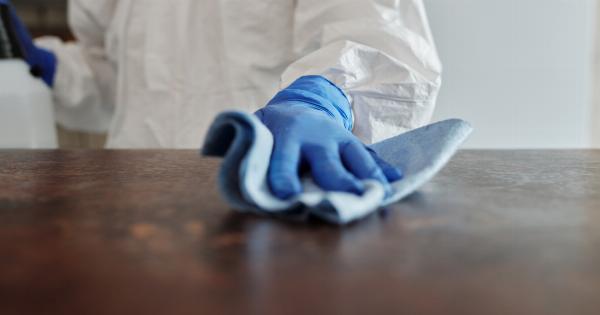Sexually transmitted diseases (STDs) are infections that spread through sexual contact. While we are aware of common STDs like gonorrhea, chlamydia, and herpes, some rare and bizarre STDs can leave you shocked.
Here are five bizarre STDs that truly exist.
1. Pubic Lice Infestation
Pubic lice infestation, also known as crabs, is a different kind of STD. Pubic lice are tiny insects that can live on the genitals, eyebrows, and armpit hair. The insects can spread through sexual contact, but also shared bedding, clothing, and towels.
Symptoms of pubic lice infestation include itching in the genital area, visible lice on the hair, and tiny specks of blood on the skin or underwear.
Treatment of pubic lice infestation involves applying over-the-counter creams and following certain hygiene practices like washing beddings and clothing thoroughly.
2. Molloscum Contagiosum
Molluscum contagiosum is a viral infection caused by the poxvirus. The virus spreads through skin-to-skin contact, including sexual contact.
Molluscum contagiosum causes raised, wart-like spots on the skin, which may appear on the genitals, anus, thighs, and abdomen.
Although molluscum contagiosum is not a severe STD, it can be frustrating to manage as the spots can appear in large numbers. Treatment involves freezing the spots, applying creams, or by scraping them off surgically.
3. Donovanosis
Donovanosis, also known as Granuloma inguinale, is a rare STD caused by a bacterium called Klebsiella granulomatis. It spreads through sexual contact and causes lesions in the genital area that can progress into deep ulcers.
Donovanosis is more common in developing countries, but cases have been reported in some parts of the United States. Treatment involves oral antibiotics, but if left untreated, it can lead to permanent scarring and disfigurement.
4. Lymphogranuloma Venereum
Lymphogranuloma venereum (LGV) is a bacterial infection that spreads through sexual contact. LGV affects the lymphatic system of the body, causing symptoms such as swelling, pain, and tenderness in the groin area.
LGV has three stages, and symptoms can vary depending on the stage of infection. LGV is a severe infection that can lead to complications like permanent damage to the genital area, large ulcers, and lymphatic obstruction.
Treatment involves antibiotics, but at advanced stages, surgery may be necessary.
5. Mycoplasma Genitalium
Mycoplasma genitalium is a bacterial infection that spreads through sexual contact. It causes inflammation of the urethra, cervix, and rectum, leading to symptoms like discharge, burning sensation, and pain during sex.
Mycoplasma genitalium is not a well-known STD, and physicians may misdiagnose it with similar conditions like chlamydia or gonorrhea. Treatment involves antibiotics but can take an extended period to clear completely.
Conclusion
Bizarre STDs like pubic lice infestation, molluscum contagiosum, Donovanosis, Lymphogranuloma venereum, and mycoplasma genitalium may not be well-known but can leave severe health outcomes if left untreated.
It is essential for people to practice safe sex, undergo regular STD screenings, and seek medical attention if they notice any unusual symptoms.





























